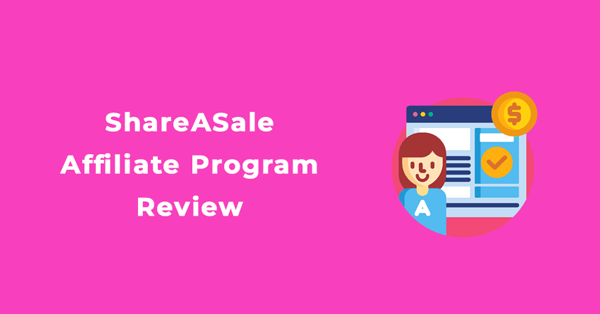RevenueHits Alternative To Google Adsense
RevenueHits Alternative To Google Adsense – you might be already using Google Adsense and you are looking for an extra revenue stream and RevenueHits would be a great fit.
Perhaps you have lost your Adsense account and you are looking for an alternative to replace it with? You might have applied for a new Adsense account and have been turned down?
Adsense have very strict criteria when you apply for a new account with them and they are constantly monitoring your account for any discrepancies. Happen you click one of their adverts on your own website, even by accent? Your account could be terminated!
Take RevenueHits For A Test
The following are the main advantages:
- no minimum website traffic required
- text ads, shadow box, video ads or GIFs
- proprietary anti-pop-adblocker
- desktop interstitials
- optimized conversion strategy
- payments by PayPal, Payoneer, wire transfer and even Bitcoin
Get more details on the RevenueHits website.
RevenueHits is an innovative advertising network that serves as an alternative platform to traditional options such as Google AdSense. Designed to cater to a diverse range of website owners, RevenueHits attracts both publishers and advertisers by emphasizing performance-based revenue models. Its primary objective is to provide website owners with the tools necessary to maximize their income through targeted advertising strategies that are tailored to their specific audience.
One of RevenueHits’ unique selling propositions is its pay-per-click model, allowing website owners to generate revenue based on user interactions. This model not only incentivizes website traffic but also focuses on delivering high-quality ads that resonate with visitors. Unlike Google AdSense, which often faces criticism for its complex approval processes and strict policies, RevenueHits offers a more streamlined approach, making it relatively easy for new publishers to join and start monetizing their content.
The platform efficiently operates within the advertising landscape by offering a wide variety of ad types, including display ads, pop-unders, and mobile-friendly advertisements. This diversity ensures that publishers can select ad formats that best suit their sites and audience preferences. Furthermore, RevenueHits emphasizes user-friendly integration, allowing website owners to implement ads without extensive technical knowledge. As such, even those who are not well-versed in website development can successfully incorporate this revenue-generating tool into their digital strategy.
With its focus on providing accessible monetization options, RevenueHits appeals to a broad spectrum of digital content creators, from bloggers and niche sites to larger media companies. By understanding how RevenueHits operates and its distinctive features, publishers can harness its potential to complement or even replace other ad networks, enabling a more versatile approach to revenue generation in today’s competitive online environment.
Key Advantages of Using RevenueHits
RevenueHits presents several key advantages for affiliates and publishers seeking alternatives to Google AdSense. One significant benefit is the potential for enhanced revenue, particularly in niche markets. While Google AdSense predominantly caters to broader audiences, RevenueHits allows publishers to monetize specialized content that may not attract the same engagement on larger platforms. This targeting of specific demographics can translate into higher click-through rates and, ultimately, increased earnings.
Another notable advantage of RevenueHits is its diverse range of ad formats. Unlike Google AdSense, which primarily offers display ads, RevenueHits incorporates various ad types, including pop-unders and interstitials. These additional formats can improve user engagement, as they create more opportunities for interaction with advertisements. By utilizing different methods of displaying ads, publishers can cater to diverse audience preferences, enhancing user experience while maximizing revenue potential.
The approval process for RevenueHits is also more lenient than that of Google AdSense. This feature is particularly appealing for new publishers or those who have previously faced challenges with ad network requirements. RevenueHits does not impose the same stringent criteria for website quality or content, making it accessible to a broader range of publishers. This inclusivity can prove beneficial for those looking to monetize smaller or less conventional websites that may not pass Google’s review process.
Moreover, RevenueHits provides a level of flexibility in ad placements that can significantly impact income. Publishers can customize the integration of ads into their sites, enabling them to find optimal placement that resonates with their audience. By testing various formats and positions, they can identify the most effective strategies for driving clicks and conversions. These advantages collectively contribute to the possibility of achieving a more lucrative revenue stream through RevenueHits, making it a compelling alternative for content creators and website owners alike.
Comparative Analysis: RevenueHits vs. Google AdSense
In the realm of online advertising, both RevenueHits and Google AdSense offer unique advantages and disadvantages for publishers seeking to monetize their content. This section lays out a comparative analysis of these two platforms across several key metrics: payout rates, ad quality, approval times, and network restrictions.
Starting with payout rates, Google AdSense is known for its competitive CPM (cost per thousand impressions) which can vary based on factors such as niche and audience engagement. However, some users have reported a gradual decrease in earnings over time. In contrast, RevenueHits generally offers lower CPMs but is praised for its consistent and reliable payouts, making it an appealing option for specific content niches that may not perform well on AdSense. This reliability can be compelling for smaller publishers aiming for stable income streams.
When it comes to ad quality, Google AdSense represents a vast network of advertisers, enabling high-quality and relevant ads tailored to the audience. This benefits publishers since well-targeted ads can lead to higher engagement rates. RevenueHits, while having a smaller ad network, emphasizes simplicity and utility. Though the ad quality might not match the tailored experience of AdSense, it provides increased flexibility in ad placement, which can be particularly useful for unique content layouts.
Additionally, approval times can vary significantly between the two platforms. Google AdSense often involves a thorough review process, which can result in delays in monetization for new publishers. Conversely, RevenueHits boasts a more accessible approval process, allowing new users to start generating revenue sooner. However, it’s worth noting that RevenueHits may impose more restrictions on the type of content permitted on its network.
In specific use cases, such as websites with unconventional niches or lower traffic, RevenueHits may outperform Google AdSense simply due to its flexible approach and quicker approval times. Ultimately, the choice between RevenueHits and Google AdSense will depend on individual user needs, content type, and desired monetization strategy, offering various pathways to successful ad revenue generation.

Getting Started with RevenueHits and Tips for Success
To kickstart your journey with RevenueHits, the first step is to create an account. This process is straightforward; simply visit their official website and click on the sign-up button. You will need to provide essential details such as your email address and website URL. After confirming your email, you will gain access to your RevenueHits dashboard, where you can manage your ad settings and monitor performance metrics.
Once your account is set up, integrating ads into your website is crucial. RevenueHits offers various ad formats including display banners, pop-unders, and in-text ads. Selecting the right ad formats depends on your website’s layout and user experience considerations. For instance, banners are effective for visibility, while in-text ads are less intrusive and can provide a seamless experience for visitors. Experimenting with different combinations can help determine what resonates best with your audience.
To optimize ad performance, you should focus on key aspects such as placement and visibility. Ads placed above the fold tend to achieve higher engagement rates. Additionally, ensure that your website’s design complements ad placements without leading to issues like clutter or slow loading times. Using A/B testing can be a valuable strategy to find the optimal arrangement for your ads, which in turn can maximize revenue potential.
However, avoiding common pitfalls is essential for long-term success with RevenueHits. Overloading your website with ads can lead to a poor user experience, driving visitors away. It is important to strike a balance between monetization and content quality. Moreover, regularly tracking and analyzing performance metrics through the dashboard will provide insights into which ads are delivering results and which aren’t. This data can be invaluable for refining your strategy and ultimately enhancing your revenue from RevenueHits.
RevenueHits Alternative To Google Adsense





